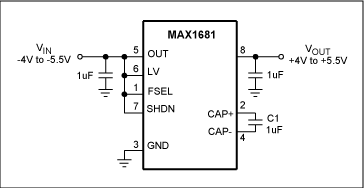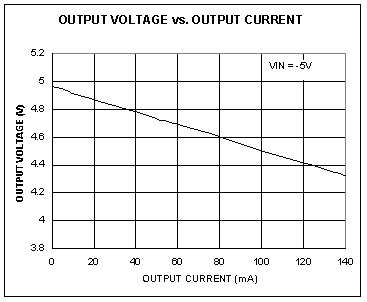Charge Pump Converts -5V to +5V
要約
For applications requiring output currents of 100mA or less, a circuit converts -5V to +5V by operating a switched-capacitor converter backwards. The MAX1681 voltage converter is used as the example.
Versatile switched-capacitor voltage converters based on charge pumps can convert a positive voltage to negative voltage, or double a positive voltage. They are easy to use, requiring only two or three external capacitors. For some applications, however, the main supply is a negative voltage. A good example is emitter-coupled logic (ECL), which requires a main supply voltage of -5.2V. For those systems that require a positive supply as well (to translate ECL to TTL, for example), a switched-capacitor converter can do the job (Figure 1).

Figure 1. This switched-capacitor converter converts -5V to +5V.
The switched-capacitor circuit of Figure 1 converts -5V to +5V. To do that, it charges capacitor C1 by connecting the CAP+ pin to ground while CAP- is connected to the negative supply at OUT. Then, it switches CAP- to ground and CAP+ to IN. Thus, the voltages at IN and OUT are of opposite polarity. If you operate the IC backwards by applying -5V at OUT, the voltage at IN becomes +5V. The charge-discharge rate is set by an internal oscillator, whose frequency is about 1MHz when the FSEL pin is connected to OUT as shown.
The converter's effective output resistance causes a lower-than-ideal output voltage (Figure 2), which declines with increasing output current. More than 100mA, however, can be generated using this method.

Figure 2. In Figure 1, the converter's non-zero output impedance results in an output voltage less than the ideal +5V.
A similar version of this article appeared as a Design Idea in the January 20, 2005 issue of EDN magazine.